| Discover the Reality of Scientific Mythology The Facts of Self-Animating Networks in Nature and a New, Realistic Role for the Mythic Imagination
| 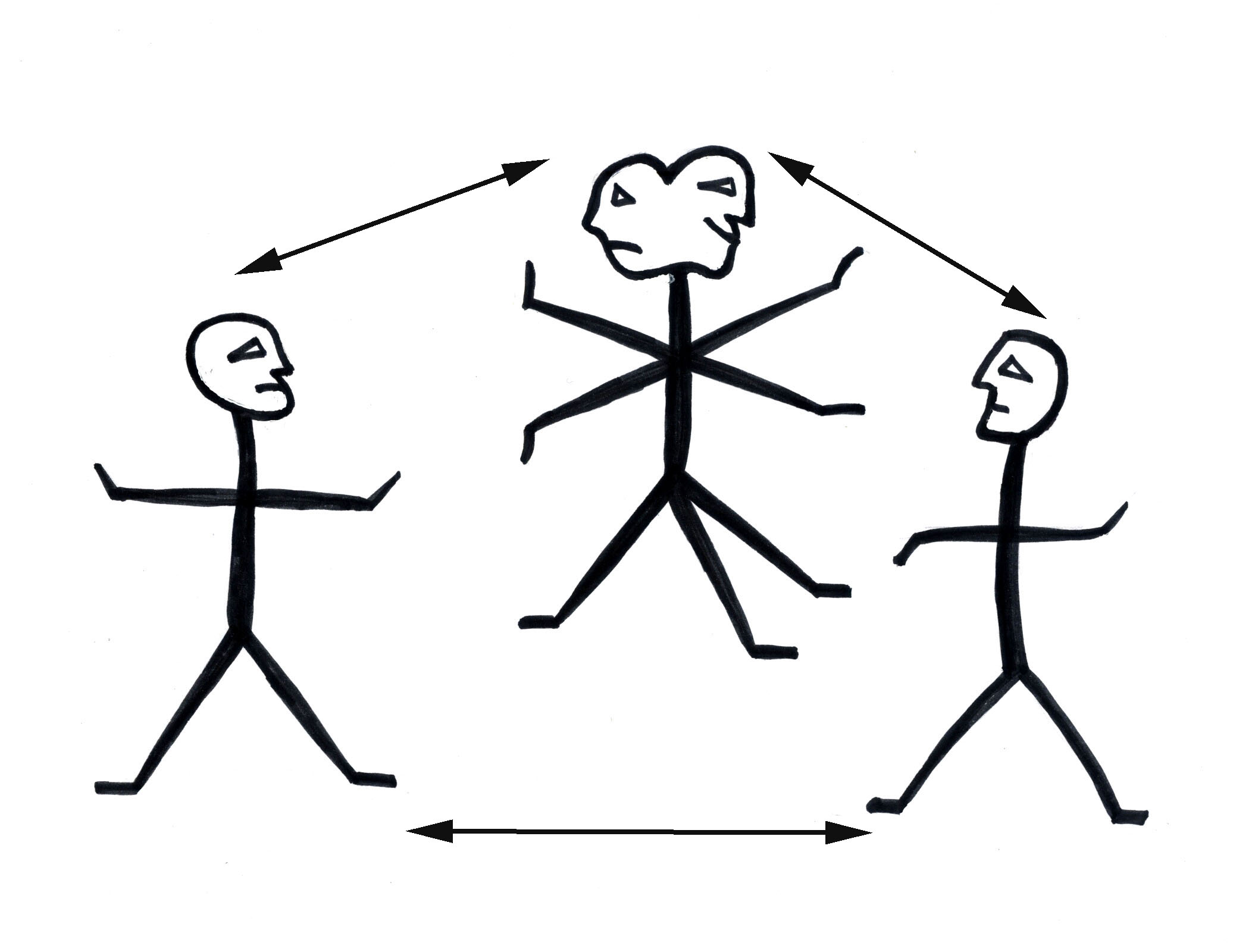  |
> NOTICE: This website represents a work-in-progress. Please contribute your feedback! email link <
| Home Page | Networks Are Us |
|
|
Knowing Self and Society as Self-Animating, Psychological Networks with the Archetypal Character of Network Souls Bottom Line:
1. You are not a machine: Your existence and your autonomy derive not simply from the material parts of your body/mind system but from the synergistic interdependency of how those parts are networked together. 2. You are an invisible network: Persons are animated by operational networks that emerge unpredictably from their physical systems, then autonomously self-organize those systems. But these networks are not entirely accessible to scientific examination or explanation, making them effectively invisible. What makes you you is an autonomous network that is not locatable in the physical components of your body system. 3. Your network autonomy gives you soul: Each self-animating network manifests its autonomy with generalized archetypal traits, as in human versus dog networks. But each individual is a unique variation of those traits. The individualized configuration of your self-animating network acts as a spiritual impetus in the formations and transformation of your self. The unique traits of that network constitute the embodied soul of an individual. |
|
 > Summary Overview < You are More than You Know
Humans are prime examples of complex adaptive systems. Though each of us is composed from physical materials, it is the networking of how those materials are organized that makes these "come alive." Complex systems generate unpredictably and inexplicably emergent network operations--which act purposefully to maintain themselves, thus you. You are a meta-system of autonomous self-organizing networks, regulating your physical and mental systems, from which your awareness of the world and sense of self are continually emerging. It is this ethereal network that makes you you--but a you that is actually a multiple being. You are a autonomous network of autonomous networks, though you are unaware of the vast majority of these. The "I" that is more than it can know:   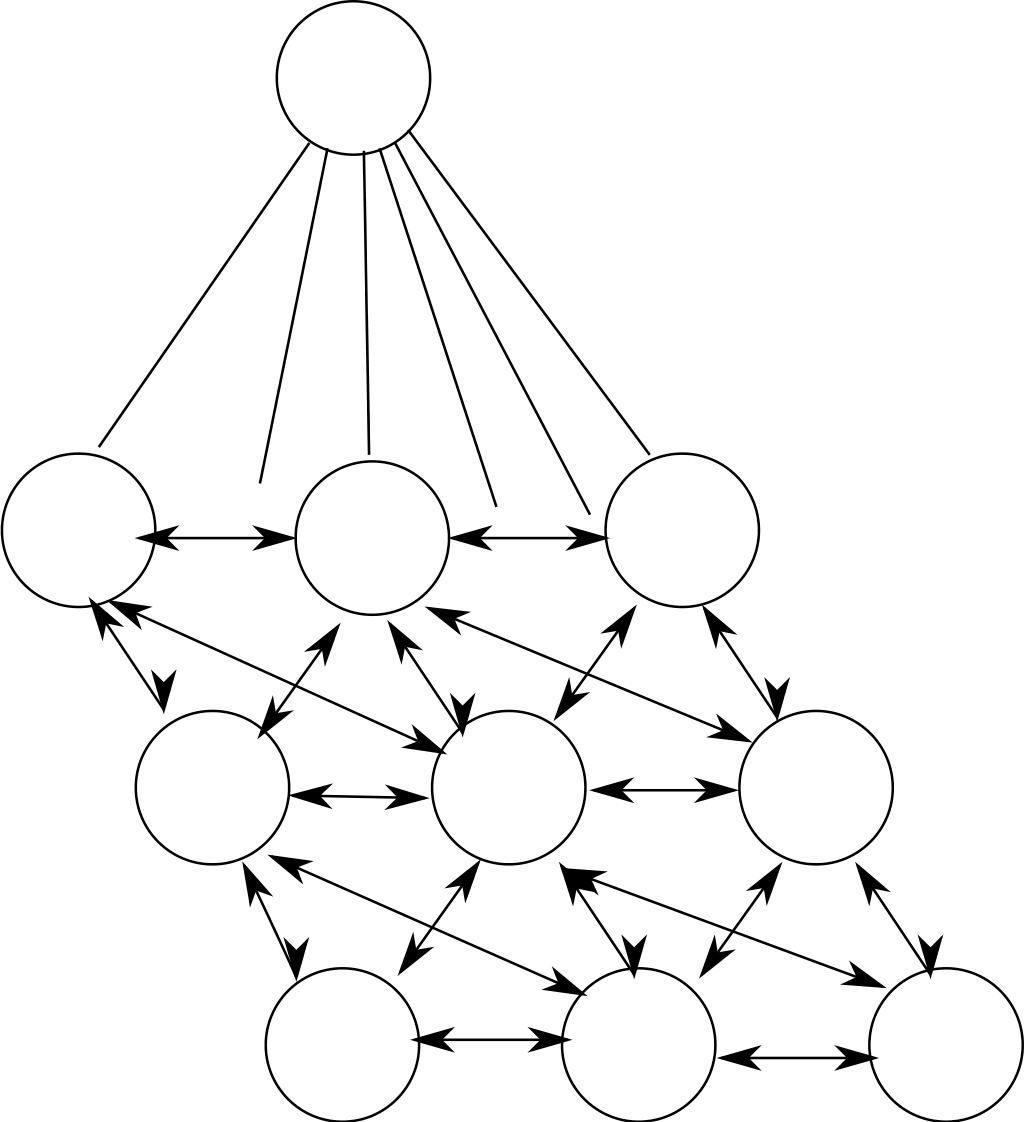  We are Are Not Alone
Social relationships are
similarly autonomous networks that interact to produce yet more
extensive, even more complex ones. But again, we are mostly ignorant of
how these interpersonal meta-networks become autonomous actors with
their own character and intentions. Social networks are animating
forces, creatures in the own right. Ignorance of this fact cripples our
ability to understand where collective behavior is actual originating.
For every group of people there is an additional, self-animating entity
influencing the behavior of each and all.Interacting networks generate additional, autonomous networks    We
might think social networks are top-down command and control
structures, but regardless of how we try to structure them, being
composed of the complex adaptive systems of individual humans, they
become interdependently interacting, autonomous networks. Willful
networks with their own character. This is just as true of the
non-human realm that constitutes the inclusive meta-network of
the biosphere.
Appearances are deceivingWhat typically looks like this: Tends to operate like this: And can best be mapped like this:      Network Psychology
If you
really want to know what
is happening in your self and among others, you
must learn to think in terms of two different ways order gets created.
One is
predictably mechanical, arising from fully calculable sequences of
events. One is unpredictably emergent, arising from only partly
calculable
interdependent interactivity. Both
are required to understand the operations of human psychology as an
autonomous network of autonomous networks. But the mind's fundamental
dynamics are complex, thus our vaunted rationalism itself is an
emergent network phenomenon.Your capacity to reason emerges from disorderly nonlinear network dynamics: 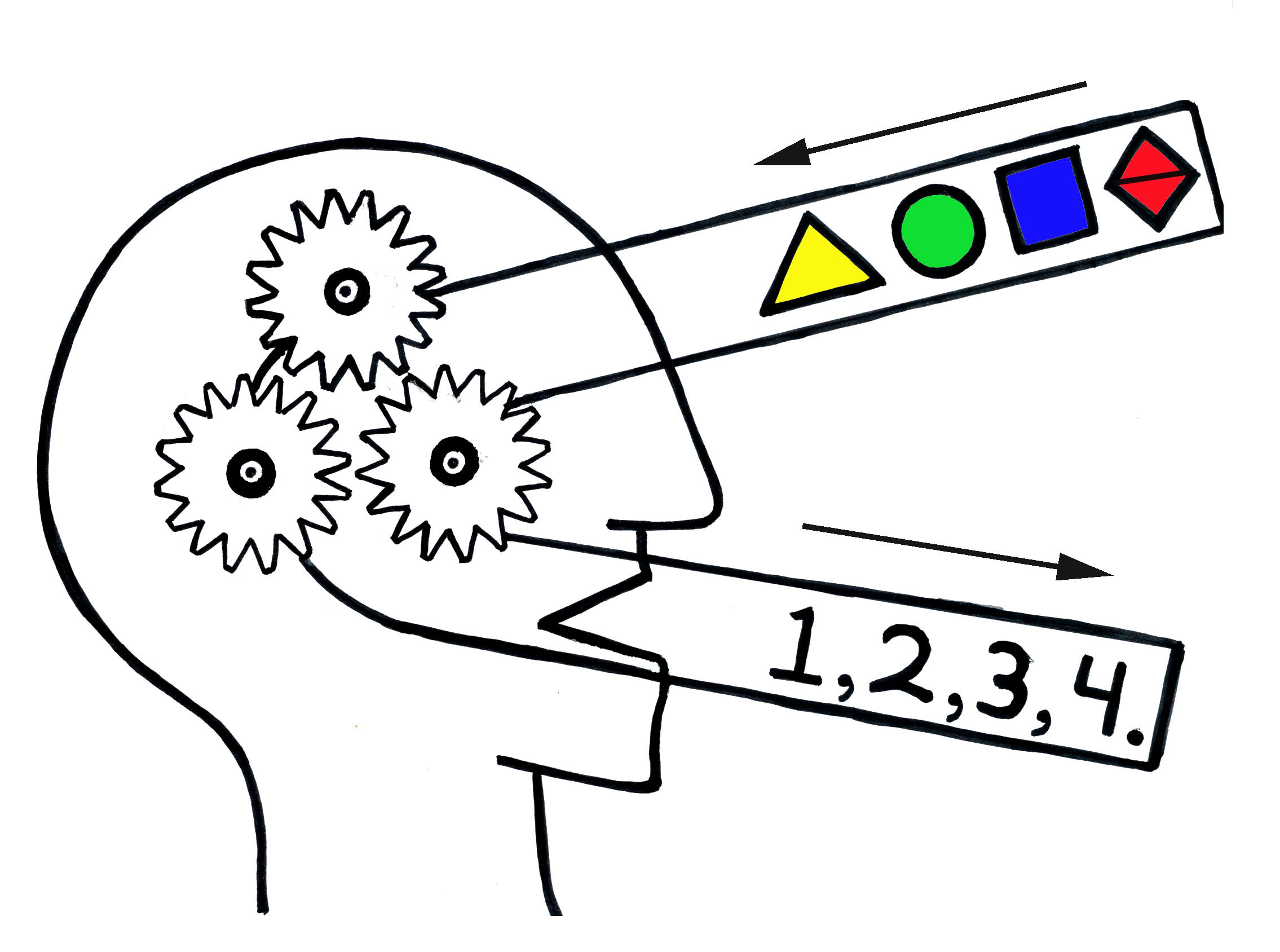
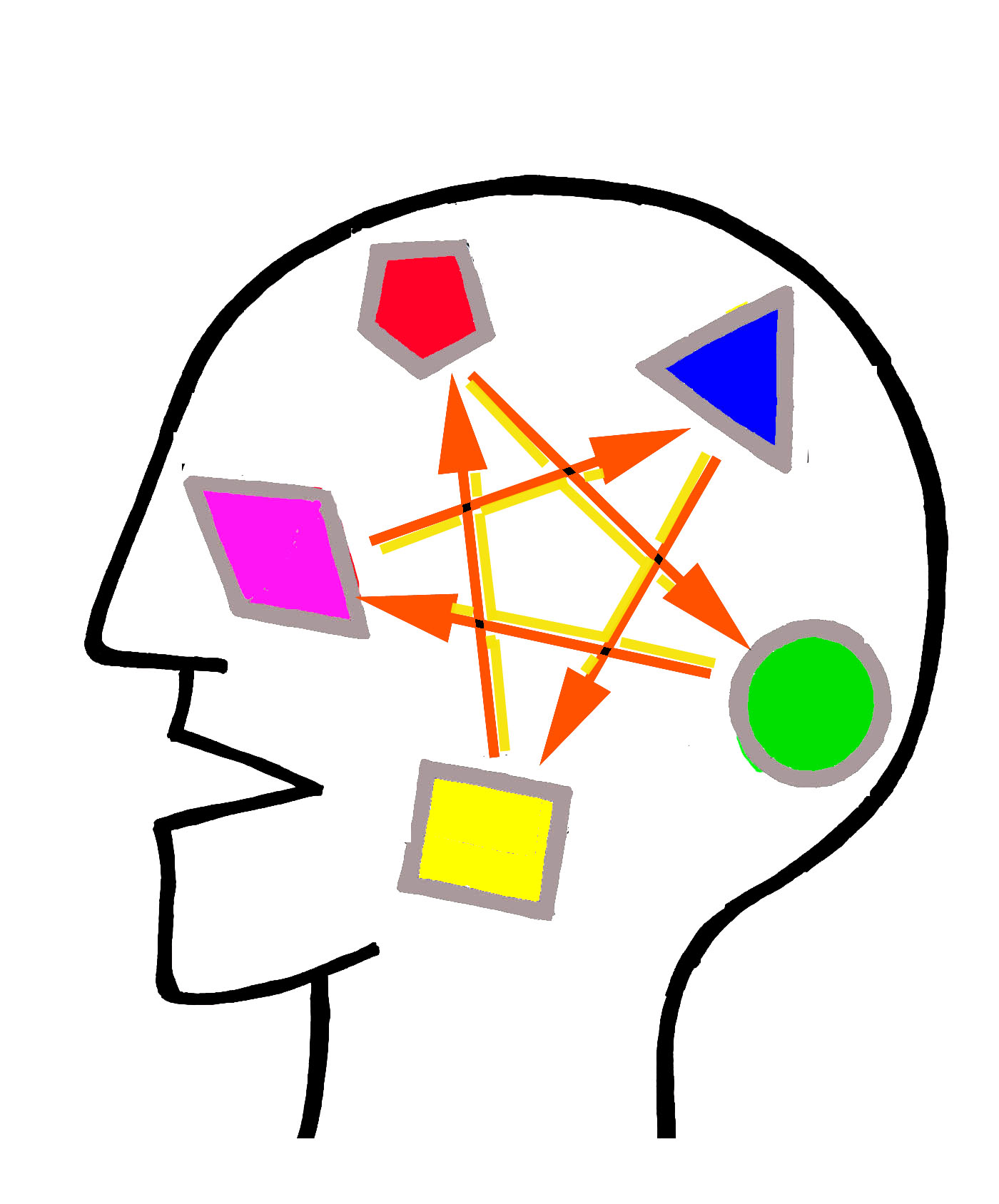 
Contents Below with Links: > Your Personal Network and Its Archetypal Soul
> Your Social Network of Networks > Social Network Autonomy and Its Archetypal Character > The Archetypal Psychology of Network Logic > Our Human Networks and Their Control-Obsessed Archetypal Soul "At Odds with Life" > The Logic of Knowing Our Selves as Ultimately Unknowable Networks--Means Knowing Symbolically  On Being a Self-Animating Network -- Networked into Ever Larger Networks Your Personal Network and Its Archetypal Soul The science of complex adaptive systems demonstrate that these produce unpredictably emergent self-organizing networks. These networks are constituted by the interdependent interactions of system parts that result in self-regulation and even adaptive transformations of their systems. Most natural systems are complex one's with such operational networks. Humans constitute what is perhaps the most complex version of such a system. Our bodies are composed of many sub-systems of this type which are networked together to generate an overall meta-system. The physical brain itself is a interdependently networked system of sub-systems, each providing different functions, the operations of which generate the emergence of our mental systems and networks. All the component sub-systems of body and brain manifest aspects of network autonomy, from whose synergistic interactions emerges their colletive, self-organizing meta-system and network. Our overt self-consciousness is a similar phenomena, emerging unpredictably from the operations of this interactivity in and among these body systems as an additional layer of system and network--which in turn influences the body systems from which it emerged. The emergence of each of these layers of network autonomy is disproportionally creative, thus not fully explainable in mechanistic terms. However it is actually generated, the ample evidence for it demonstrates that you are not simply a complicated bit of predictably deterministic biological machinery. Certainly there are innumerable mechanistic processes involved in the physical composition and functioning of our bodies. But complex systems and network science provides evidence that the formation and activities of the physical body are largely organized by emergent networks cannot be specifically located in those physical aspects yet organize them. Our mental system is such an network that emerges from the brain system, which itself generates an emergent network that regulates it as a physical organ. The mental system clearly has the brain system as its basis of emergence. Thoughts, ideas, and feelings, associate with neurological activities in brain tissue. But despite many efforts, these aspects of mental networks have not been proven to be the same as neurological events. The mental system has not been conclusively reduced to that of the brain. Evidence provided by complex systems and network science compels us to consider the mental system as a somehow ethereal network that is not overtly "visible" as a physical entity. Neither this strange trait of an emergent network, nor the evident autonomy of self-determining volition it grants us, are unique to the human mind. Indeed, our minds are only one level of this phenomenon that occurs in and animates all our body systems, as well most systems in the biosphere. One example of network emergence among many
We
are each a
particularized version of the human type of complex adaptive system
whose existence is animated by interdependent interactivity and its
synergistic emergent creativity of self-animating network autonomy.
There are no gears in your head. There is no computer program
running a pre-existing pattern. Rather, there is an ongoing flow of
simultaneously interacting feedback among millions of redundantly
interconnected neurons. This always partly disorderly interactivity
emergently processes data from body systems, memory, perception, and
genetic encoding, into meaningful information, improvising you moment
to moment, as
thoughts, ideas, feelings, and actions. Even your most rationally
mechanistic thinking is an emergent property of this "looseness" or
"play" that facilitates your mental network's
unpredictable autonomy.The emergence of our mental system and its self-organizing operational network, from our physical brains, which it then influences, is typical of emergent network autonomy across all variations of complex adaptive systems in Nature:  Even abstract reason is the "play" of mental networks
Our linear, logical thinking emerges from, and feeds back into, our nonlinearly networked cognition:  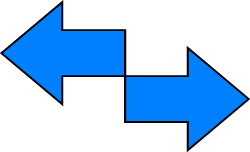  This view of mind or psyche is a pluralistic one. Like body and brain, mind is a network of networks. Your overly self-conscious awareness, your sense of self, is only a portion of this emergent mental meta-network. The complexity of that network of networks, with all its aspects and synergistic flows of interactions, which necessarily involve conflict and disorder, is not be reducible to a "singular sense of self." Many sub-networks, or "psychic complexes," are acting with their own autonomy simultaneously. Thus, part of your meta-network's operation must be to regulate self-awareness by limiting its registration of the mind's actual complexity. To function pragmatically, the "me" or "I" aspect of your psychic meta-network can only be encompass a small set of the minds overall operations. Thus the vast majority of your mental network is, at any given moment, not "self-evident." Your behavior, emerging from an ever-changing interaction of cooperatively conflicting components, in variable responses to changing perceptions and contexts, is beyond the network of your self-conscious awareness. Yet this state of limited self-knowing is essential to your ability to function as a seemingly unitary entity. The "I" that is not "all of me"
Self-awareness is only one network among the many that you are: "Me":
The
rest of "me":
The "us"
of "me":
    Despite its functional necessity, this condition of limited self-awareness leads to all manner of confusions about who you are and why you do what you do. Thus, it becomes necessary to practice self-reflection upon one's habitual sense of self, if one is to have any remotely realistic awareness of who one is and why one thinks or acts in certain ways under various conditions. To act with a more holistically self-aware autonomy, one must at least periodically explore what sub-networks in one's psyche are acting with their specific autonomous impulses to influence one's overall behavior. As an unpredictably emergent property of complex adaptive systems, self-organizing network autonomy is intrinsically variable. But it does manifests general traits in types of systems, such as animals, then more specific traits in specific animals, such as humans. There is a range of characteristic traits to human systems, physical and mental. These are termed archetypal because they constitute an originating range of traits for an identifiable type of system formation and network behavior. A human system is identifiable because it manifests these traits in characteristic ways. But each individual person is a somewhat unique manifestations of a human complex adaptive system and its self-animating network. Due to the emergent ordering of your psychic meta-network from many, often conflicting, sub-networks, no two humans are identical--nor are you exactly the same configuration from one moment to the next. The particularities of your mental network, and how it animates your body/mind systems, constitutes a unique formation and operation of the archetypal tendencies of human systems. This ultimately invisible and partly ethereal network phenomenon acts like a spiritual impulse that animates your systems in individually characteristic behaviors. Thus your person is the embodiment of your overall self-animating network, which together constitute your embodied soul: the materialized expression of your mental network--which is, of course, a network of networks emergently networked together. Networks are us. Your Social Network of Networks Multiple humans in social association generate similar self-organizing networks. These are constituted by couples, friends, families, groups of workers, local communities, cities, etc., that all network together to form yet larger scales of extended interdependent systems and networks. Collectives are self-animating just like individuals. Similarly, just as your personal network is not overtly evident or measurable, so to are these networks. Just as each of us is largely unaware of the extent and operations of our individual network autonomy, so too social groups tend not to be overtly aware of the network interdependencies and autonomous behaviors created by their interactions as complex systems. Though we tend to think relationships are constituted by two or more independent people, human interactions readily generate synergistic interdependency. The increased complexity of this collective interaction generates a further emergent system with its own network autonomy that becomes an additional "actor." The company of two makes for a crowd of three
Social Network Structure and the Dynamics of Collective AnimationTwo mental meta-networks interacting generate a third--with its own autonomy:    Thus, the interaction of two people, each animated by his or her own mental network autonomy (with all its paradoxical conflicts) their reciprocal interdependence generates an additional source for their behaviors--as individuals and as a couple. The overall tripartite system that emerges has multiple network autonomies acting to animate it. However, if neither person is aware of the majority of their own personal network's autonomous operations, both people will be unlikely to comprehend the emerging character of the third network that is emergently evolving from their interactions. This aspect of network science helps us understand why human relationships can be so confounding and un-controllable. They have a life of their own because they have autonomous networks of their own. In the absence of overt awareness of these hidden dynamics, we tend to experience our relationships as a struggle between two knowable entities. There seems to be only "me" and "you," each presumably knowing what and why one is behaving as one is behaving. But, given complex network dynamics, it is simply not logically possible to fully know what we each individually are doing or why, much less what are the intentions of the collective networks our interactions generate. With this perspective, it becomes obvious why social relations can become so profoundly confusing and participants tend to resort to blaming each other for what is happening. However, intensive examination of the hidden archetypal traits of the actual events that occur can give us a better sense of self, others, and the additional network "creatures" to which we collectively "give birth." Generating that sort of awareness requires deferring competition and blame to facilitate reflection and more complex insight. Because the complex network structure of social relationships creates its own autonomous behavior in an improvisationally on-going, moment to moment manner, social networks are constantly in flux and unpredictable. No matter how we attempt to impose uniform order and control on these social networks, they tend to act in ways we neither intend nor perceive. Even when we deliberately attempt to structure hierarchical networks of command and control, as in paternalistic families, governments, or corporations, the resulting behaviors still remain unpredictable due to the complexity of the relationships of the individual networks involved, and the bottom-up ordering these create. Appearances are deceiving
Hierarchic aspects of
system structure and network configuration can be emphasized, but
humans being the complex adaptive systems they are, social networks
necessarily remain operations animated by network autonomy. Indeed,
hierarchical structure is itself a particular type of animating
influence.Social networks that look like top-down command and control structures are to some degree autonomously self-determining complex systems:   Social Network Autonomy and Its Archetypal Character Just as individual personal mental networks express characteristic behaviors, so do collective social ones. The identifiable traits of a given network structure tends to influence its operational behavior. The chain of command in an army restricts interactions between commanding officers and subordinates. This limits the flow of feedback between hierarchical levels of the command structure, as in between privates and generals. Thus the autonomous behavior of subordinates tends to be limited in how it interacts with higher levels of the collective network autonomy. Top-down control operations are thusly increased while bottom-up influence is diminished. But this restriction makes the overall system less adaptive to disruptions. When a general fails to act or there is a mutiny among privates the entire system can collapse. In contrast, less hierarchically structured system networks, such a a group of friends, tend to be more flexible and adaptive. Any one person might leave the group but it may well continue to operate as a system by adapting its network of relationships. In this regard, the traits of a systems network structure tends to give it characteristic behavior patterns. These are termed archetypal traits because they are not fixed formations but traits that emerge from particular network operations, thereby identifying its individualized expression of a general type of system and network. Armies express variations on archetypally hierarchical operations. Groups of friends express variations on archetypally communal operations. However, due to the unpredictable behavior of network autonomy, both in the individual and collective networks involved, both types of groups can re-organizes in ways that express either tendency of archetypal character. Armies can become more collectively networked and groups of friends can become more archetypally hierarchical. Such is the self-animating adaptivity of complex systems and networks. Further, due to inherent complexity, archetypal character is inevitably conflicted or paradoxical. Armies act both to kill and protect. Groups of friends or families tend to be both cooperative and competitive. Thus a complex system's overall archeytypal network character tends to be similarly complex and self-contradictory. Given these traits of social network operations, it becomes important to learn to perceive the archetypal character of both their seeming structure and their actual autonomous operations. Collective networks manifest archeytpal character that is often not obvious. It can also be variable depending on the conditions of a given moment or context. We can assume that a government institution, such as the congress, will act as intended to promote the interests of citizens. But depending on what relationships of interdependency emerge between the personal networks involved, such as congressmen and lobbyists, the actual behavior of the system can become archetypally corrupt--deliberately acting to subvert its intended structure and purposes. Similarly, the two person relationships of couples can manifest collective network behavior that is both invisible and incomprehensible to the individual persons involved. Like it or not, each of us is the variable, mostly obscure expression of our emergent mental network's autonomy, which becomes interdependent with innumerable other such networks, forming collective versions, each with variable archetypal character. Consequently, it is not only most difficult to understand what is actually happening and why, it means both our individual and collective behaviors are not directly controllable. The Archetypal Psychology of Network Logic Knowledge of network structure and dynamics gives us new insight into how order is created and maintained in our selves and the world around us. The roles of diversity and instability in the emergence of self-organizing criticality, thus network autonomy, provide a fundamental basis for constructing more accurate psychological theories. Though mind is an emergent property of brain activity, the more accessible traits of brain neurology indicate the type of complexity required for both systems to exist. The configuration of both, and their interdependency, is necessarily conflicted and variable. their emergent self-animating networks, is necessarily conflicted and variable. For these to exist and emanate the overall self-animating networks of our body/minds, there must be multiple hubs of diversified operations that are redundently interconnected and interdependently interactive. In essence, diversity and significant disorder are inherent in such systems operating at the edge of chaos. Those conditions in their network operations make them capable of unpredictably emergent creativity, the basis of their adaptive self-organization and volitional actions. A psychology based in this new knowledge precludes any definitive theories of how our behaviors are actually generated or why. It can at best seek understanding of the mind and its effects in terms of complex network dynamics and assessments of the behavior tendencies these produce. Being improvisationally self-organizing meta-networks of interdependent, conflicting, ever-emerging networks, there can be no single identity or sequence to who we are and how we think, feel, or act. Indeed, the marvel is that relatively consistent human behavior can possible be generated from such hyper-dynamical contexts, with their invisible operations coordinating both mechanistic and emergent order creation in an on-going interplay. Of the many existing psychological theories of mind, those which most aptly model our mental networks are associated with the term depth psychology. Sigmund Freud is often considered the originator of such theories, with his notion of a conscious and sub- or un-conscious factors operating in considerable conflict to generate our behaviors. The work of Carl Jung took elaborated this basic idea by conceiving that the ordering and operations of psyche are influenced by what he called archetypes. These are fundamental types of activity which take on specific expression in the behaviors of each person. Thus one can speak of a father archetype or a king archetype. James Hillman added a further perspective by conceiving this idea in terms of archetypal behavior, in contrast to the notion of pre-existing, immaterial patterns of archetypes as definitive "things." Hillman's archetypal psychology correlates particularly well with the evidence from network science. Regarding all phenomena as archetypally differentiable is helpful in aids in distinguishing the dynamics of mechanistic versus emergent order creation, as well as how network autonomy is expresses individualized manifestations of archetypal patterning. Applying this archetypal analysis to the forms and behaviors systems enables us to have understanding of them that the mechanistic analysis of physics cannot provide. It can track and characterize emergent order creation in ways that give some sense of how complex systems might behave, despite that fact that these are ultimately unpredictably autonomous. Archetypal ranges of traits can be identified for forms, such as roundness or squareness, and for behaviors, such as cooperation and interdependency versus competition and exploitation. But because we and the world are continually being created by the conflicted, unstable dynamics of complex systems, these domains of form and behaviors can overlap and be themselves interdependent. So an archetypal perspective cannot provide definitive categorization, it cannot be predictive. In so far as archetypal analysis provides information about network autonomy, it is effectively a psychology of complex networks, be those human or non-human. When network autonomy is revealed as volitional it becomes archetypally psychical--a phenomena that involves some element of self-awareness and intelligence. Thus an archetypal psychology based on network science is not restricted to analyzing human mental systems. Rather, human mental systems become one archetypal expression of a larger archetypal field of order creation and behavior which, in its many variations, animates the biosphere. Networks manifest as individualized archeytpal ranges of structural and dynamical character. Complex adaptive networks are archetypally autonomous. The specifics of each complex network's archetypal autonomy express its embodied soul. Networks are us. Our Human Networks and Their Control-Obsessed Archetypal Soul "At Odds with Life" In general, human created systems--social, political, economic, industrial--tend to manifest more hierarchical structure and control oriented operations than do the non-human systems of the biosphere. This tendency logically derives from the civilization's technological human preoccupation with adapting environments to human desires. That primary impulse is the antithesis of seeking to adapt human behavior so that it acts reciprocally with the autonomy of existing natural systems. Nonetheless, human systems tend to involve significant degrees of complexity's interdependent dynamics, both internally and in the relationships these systems evolve with each other. That makes these produce layers of network autonomy which human planners neither intend nor can control. Due to the relatively un-natural hierarchical, control-oriented traits of our systems' structures, the network autonomy that emerges from them can tend to amplify their controlling tendencies. This is a primary aspect of the archetypal character in their network soul. It manifests with distinctive archetypal traits of domination and exploitation. Technology, power, and control obsessed hierarchy
Technological power promotes systems of control that exist by exploitation of other systems:    In effect, human systems can become so autonomously control obsessed that these act with their own intention to control anything and everything--they take on a life of their own that we, their originators, neither perceive nor can possibly control. Civilized systems inevitably become rogue operations that animate society according to their emergent character. Thusly, systems of "law and order" intended to control interpersonal violence and economic corruption can become autonomously more focused on imposing obedience by intimidation and force--just for the sake of the system's own sense of self-preservation. Or, such control systems can become allied with elite human individuals or groups whose network autonomy is obsessed with control and power enhancement for its own sake--the extreme being authoritarian or fascist political movements and imperial economies. In the process, people and social systems having more communal archetypal character tend to become the "enemy" of hierarchical systems. Control obsession reflexively acts to suppress and debilitate the autonomy of cooperative and communal networks. This is the very historical behavior of British imperialism that motivated the emergent creation of the divided power structures of the American republic. The collective social network of the American rebellion against the hierarchical character of the British empire generated a network autonomy among American colonists that deliberately chose to structure a system with a different archetypal character. Nonetheless, being a civilized system, it relies upon command and control structures that are inherently susceptible to behaving in the interests of their own power, despite their intended purposes. Again, networks seek to sustain themselves--regardless of the intentions for which they were formed. Control oriented networks seek to enhance their capacity to control other networks. To do this, such networks promote conflict between the other networks they seek to manipulate--the network behavior of "divide and conquer." Obviously the obsession with control does not entirely characterize the archetypal soul of civilization. History is a long tale of struggle between archetypally tyrannical and communal, competitive and cooperative character in civilized societies. But it is not so obvious how increasing technological capacities for manipulating and controlling events, both human an non-human, leads to ever more control-obsessed human systems, which exert massive influence on environments. In the name of freedom, equity, opportunity, and civility, we have generated ever more potent means of manipulation--from industrial manufacturing and farming to genetic engineering, robotic warfare, electronic computation, and invasive surveillance of entire populations. We now reflexively seek to "make life as we wish it to be," without regard for the impact our manipulations have on other natural systems and networks--which are essential to our own survival. For many, the results of our massive manipulations appear beneficial, but for the vast majority of humans, the effects have been impoverishing--both economically and culturally. The majority of advantages generated by our control-obsessed systems accumulate to an ever smaller percentage of the world's population. This disparity is logical, given the underlying archetypal character of civilization's control-obsessed network soul. Hierarchical networks seek to sustain and expand their control. This preoccupation with control necessarily leads to its enhancement by limiting the responsiveness of the "upper" levels of hierarchical systems to the "lower" levels. Control creates disproportionate power for some by dis-empowering the systems and network autonomy of others, thereby disabling the self-sustaining operations of the meta-network of all interdependent systems--both social and biological. Hierarchical systems are intrinsically non-reciprocal and exploitative. Their autonomy acts to limit their reciprocal interdependency with the systems they exploit by forestalling the flow of feedback, the consequences of their advantage seeking manipulations, from influencing their own behavior. But the disabling effects of this networked obsession with non-reciprocal exploitation of human systems is not just evident upon humans. It makes these as or even more unresponsive to the operations of natural systems. Civilization's configuration as a meta-level of control-oriented system and network is constituted in opposition to the autonomy and reciprocity of non-human natural systems. It emerged into being as such a type of system with the advent of farming as a way to control natural environments. It elaborated from that basis into the urbanized, technologized, hierarchically stratified mass societies of history. As an archeytpal soul, civilization cannot resist its impulse to manipulate and control, to be tragically at odds with the very natural systems upon which its own operations depend. That was what it was "born to do." Civilization's domesticating imperative sets its "tame" mentality at odds with Nature's "wild" dynamics of interdependent reciprocity. However, this intrinsically exploitative character does manifest some conscience in its network autonomy. There are aspects of resistance to its power-obsessed tendencies. These are evident in struggles to foster more democratic and egalitarian social systems, as well those seeking to forestall our destruction of the biosphere's autonomously self-creating, self-sustaining systems. The question of the 21st century is: which side of civilization's paradoxical character, the competitively exploitative or the cooperatively reciprocal, will act through our collective network autonomy to emergently determine our unpredictable future? Will we collectively remain naive about the titanic struggle in our conflicted network souls until we have so devastated non-human natural systems that the present self-ordering configuration of the biospheric system collapses? Can we intentionally re-configure the system structures that produce the impulses of our network autonomy to alter significantly alter its behavior, the ways it now animates our systems? The geological determination that we evolved within a global climate era termed the Holocene, named for its relative continuity and favorable conditions for human societies, but now exist in an era termed the Anthropocene, named for the fact that humans have profoundly altered the behavior of global climate systems, tells the tale of civilization's network soul. The scientific evidence is overwhelming. Our response to it is practically non-existent. Global consequences of civilizations control-obsessed network soul
The geological era of climate network behavior that fostered civilization has ended because of it: Favorable post-ice age climate of the Holocene: Chaotic climate of the Anthropocene:   The Logic of Knowing Our Selves as Ultimately Unknowable Networks--Means Knowing Symbolically All these aspects of the overlapping, paradoxical, hidden layers of archetypal character in network autonomy cast grave doubt on just how much we can know about our selves and our systems. Network science is providing more insights into this domain of complexity's interdependently emergent phenomena. But the very facts confirmed by this scientific analysis are what establish the limits of our knowing: complex networks by their very dynamical character are not fully describable or explainable. But the information provided about them, as far as it goes, does give us some guidelines for intuiting more details about their archetypal patterns of behavior, their archetypal network souls. This method leads to the symbolic modeling of artistic and mythical symbolism as a means of representing what is "going on" in the invisible, self-determining nether-world of complexity and its autonomous network behaviors. That involves percieving them as personalities, as actors with archetypal characteristics of behavior, so that we get a better sense of how they tend to act, since their autonomy precludes the possibility of accurately predicting how they will act. We cannot directly control them--meaning our own selves as well--but we can learn more about how to live with them reciprocally, and thereby influence their behaviors in ways that might restrain their destructively exploitative impulses. |
 Dive Down
Dive Down